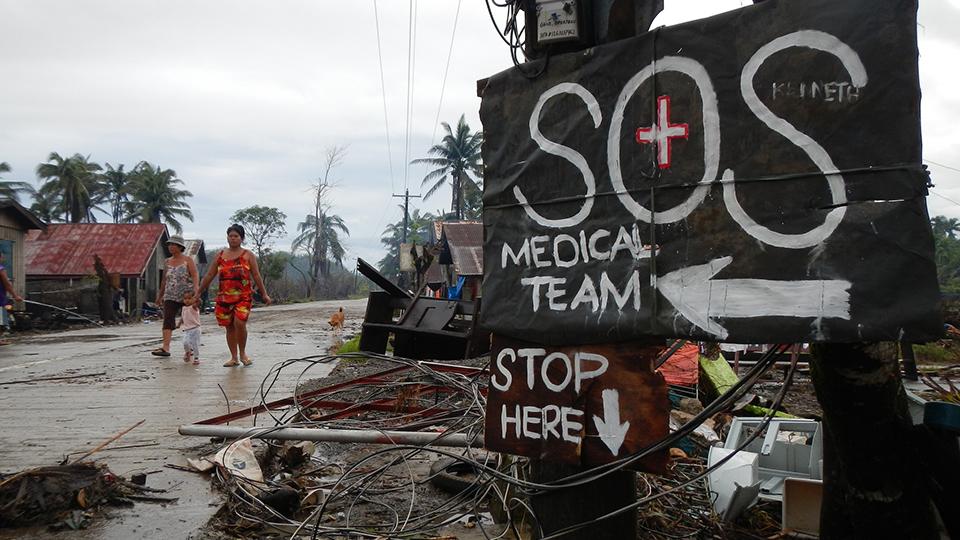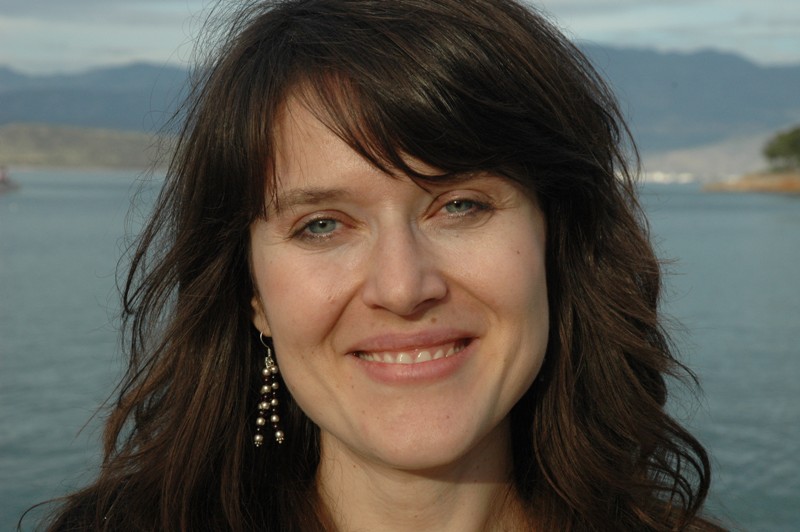From feedback fetish to a culture of listening – what role should digital media take in disaster recovery?
Primary page content
On November 8th 2013 Typhoon Haiyan hit the Philippines leaving a trail of destruction in its wake.

Philippines - image by medico international via Creative Commons
It remains the strongest storm recorded, with over 6,300 casualties and more than 12 million people displaced or otherwise affected. In this essay, Dr Mirca Madianou explores the lessons learned about the role of digital media in disaster recovery.
Visit humanitariantechnologies.net to find out more about the Humanitarian Technologies Project and read their latest news and publications
Within minutes, the internet was also flooded: with optimism, particularly about the promise of communication technologies in disaster recovery and humanitarian relief.
Such optimism is recent, although it predates Haiyan. The 2013 World Disasters Report uses the term 'humanitarian technology' to refer to the empowering nature of digital technologies such as mobile phones and social media for disaster recovery.
It’s claimed that interactive technologies enable communities to participate in their own recovery, respond to their own problems and ‘make their voices heard’. Technologies are welcomed for their potential to catalyse a ‘power-shift’ in humanitarianism by building feedback structures that empower communities to hold humanitarian and government agencies to account.
Is this the reality on the ground?
Despite the enthusiasm regarding the role of digital technologies as tools for disaster recovery, there had previously been little evidence to assess their impact.
Between April 2014 and January 2015 our research team interviewed more than 100 people affected by Typhoon Haiyan, and 38 experts: representatives from humanitarian organisations, local civil society groups, government agencies, telecommunications companies and digital platform developers.
We found that assumptions about technology present in humanitarian policies do not translate to actual uses of technology by affected people. This disconnect was apparent when examining the participation of affected people in disaster recovery.
Communication technologies do not give people a voice.
Technologies can facilitate voice but only as long as other factors, such as social capital and a strong civil society, are present.
There’s a divide between better-off people, who are most likely to have a post-disaster voice, and the poorer participants for whom finding a voice is more challenging, if not impossible. Middle class participants can exploit some of the potentials of digital technologies to make their voices heard and bring attention to their problems, often improving their social positions.
Those who are most in need are less likely to find such opportunities because they lack access to these technologies and the skills needed to use them.
Our research explored the processes that silence those voices. We observed practices that actively sought to discourage protest, for example, threats or a generalised fear that affected people may be struck off beneficiary lists.
We also found evidence of subtle forms of silencing through lack of self-confidence and feelings of helplessness, where people internalised views that their low socio-economic status diminishes the value of their voice.
An echo chamber, not dialogue
Crucially, we observed that humanitarian relief is experienced as an extension of the patron-client ties that structure social relationships in the Philippines. Poorer participants refrained from expressing a direct criticism of relief distribution as this could potentially destabilise such relationships of obligation and dependency.
We found that much of our participants’ mediated communication resembled an ‘echo chamber’ and not a dialogue. Participants are likely to share their views with their peers but not with representatives from aid or government agencies. This mediated voice has value, but it’s limited in its capacity to correct any power asymmetries in humanitarian action.
One factor that made a difference in empowering people to participate in the recovery process was the presence of a strong civil society, such as community organisers who can empower people to make their voices heard.
Failing to close the feedback loop
Because of the existing technological infrastructure in the Philippines, Haiyan was widely seen as an ideal laboratory to pilot accountability initiatives by humanitarian agencies. Several agencies interpreted accountability as feedback and set up mechanisms for people to offer their views and express concerns. Interactive digital technologies were often prioritised as feedback collection tools.
This narrow interpretation had a number of consequences. Given the relationships of obligation and patronage that govern Philippine social life, affected people were reluctant to offer their views or air their grievances.
Examining the feedback databases of several humanitarian agencies we found that a significant number of messages were ‘thank you’ notes expressing gratitude and indebtedness. Only nine of our 102 participants used the agency feedback platforms. We could argue that accountability remains a western concept.
The feedback that was received was hardly acted upon. Of our few participants who offered feedback most only received an acknowledgement and clarification to their issues, without leading to satisfactory outcomes. Despite good intentions, the effects of not closing the feedback loop are potentially harmful as they can lead to further silencing and demoralisation.
Workers on the ground – the ones who collect feedback and are in touch with affected people – are often aware of the limitations mentioned here. They are often unsure of what happens to collected data once it’s pushed higher in the organisational hierarchy. Our research suggests that the main audience for feedback data is donors, not affected people. It serves the role of satisfying funders’ demands for evidence and impact.
For accountability to meaningfully work, we need to shift from a culture of audit to a culture of listening and working together with affected communities. We need intelligent and culturally sensitive accountability.
Normality after disaster
Technologies might not have fulfilled expectations of voice and accountability, but they were still firmly embedded in the everyday lives of our participants. Mobile phones and Facebook were widely used for sociality and entertainment, and in mourning and memorialization rituals. People also quickly returned to the long-established uses of social media - dating and computer games.
We view media’s everyday uses in the face of extraordinary events as meaningful coping mechanisms and ways of reintroducing normality in the aftermath of disaster. The familiar rhythm of radio conversation, the global gaming community and the ambient co-presence of Facebook friends are used to reclaim ordinariness within the exceptional.
Platforms that were introduced by aid agencies to facilitate information dissemination and feedback were often appropriated for different purposes by affected people. Humanitarian radio which used Frontline SMS for feedback was, instead, largely used for song requests and dedications to friends and family members.
We recognise this as an important social function of humanitarian radio and interactive media. Such practices represent a need to affirm relationships in the post-disaster context and a way for people to regain control over their social lives after the disruption of disaster.
The uses of media for sociality and recreation are vital for our participants’ well-being. Yet, we remain aware that the ordinary uses of new as well as old media, despite their social significance, do not achieve the redistribution of resources which is vital in the aftermath of disasters.
A version of this essay was originally published by Open Democracy.
The Humanitarian Technologies Project research team includes Mirca Madianou (pictured above, Goldsmiths) and Liezel Longboan (Goldsmiths), Joanthan Ong (University of Leicester), Nicole Curato (University of Canberra) and Jayeel Cornelio (Ateneo de Manila University). Research is funded by the ESRC.
